
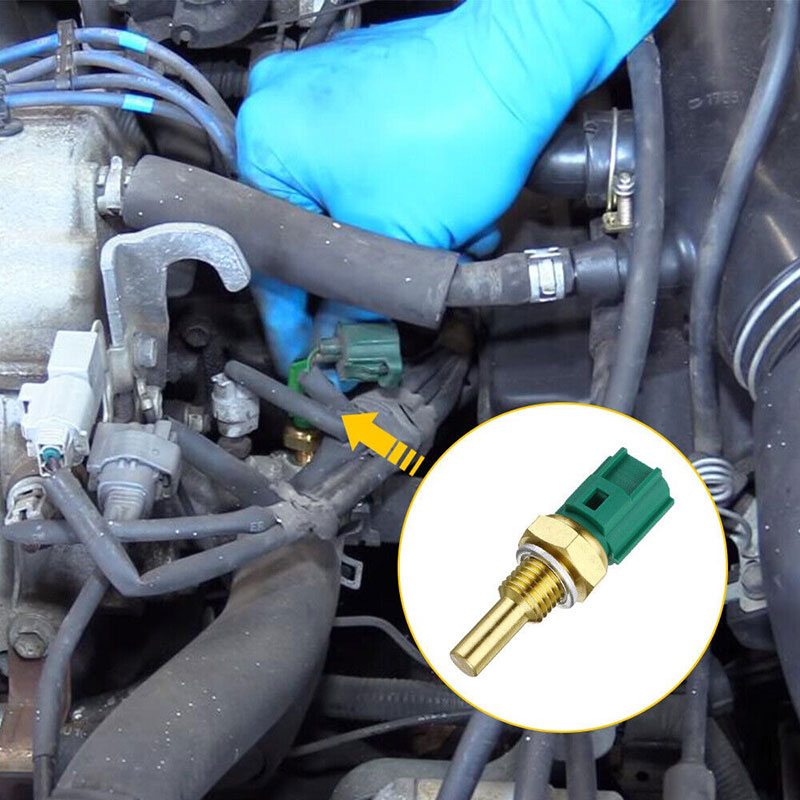
What is an Engine Coolant Temperature Sensor? – Function, How It Work, Problems, Testing
Contents
- Core Functionality and Design Engine Coolant Temperature Sensor
- Definition and Primary Role
- Sensor Construction
- Electrical Interface
- Integration with Engine Management Systems
- Fuel Injection and Ignition Timing
- Cooling System Control
- Dashboard Feedback
- Types and Variations of Engine Coolant Temperature Sensors
- Negative vs. Positive Temperature Coefficient Sensors
- Multi-Sensor Configurations
- How Does an Engine Coolant Temperature Sensor Work?
- Why is the Engine Coolant Temperature Sensor Important?
- What Happens When the Engine Coolant Temperature Sensor Fails?
- Diagnostic and Failure Analysis
- Common Failure Modes
- Diagnostic Tools and Methods
- Expert Insights
- Conclusion
- FAQ
- Need More Help?
The engine coolant temperature sensor (ECT) is a critical component in modern vehicle engine management systems. It plays a vital role in monitoring engine temperature, ensuring optimal fuel efficiency, and preventing overheating. In this article, we’ll explore its functionality, design, integration with vehicle systems, diagnostic procedures, and failure implications.
Core Functionality and Design Engine Coolant Temperature Sensor
Definition and Primary Role
The ECT sensor measures the temperature of the engine coolant and transmits data to the vehicle’s engine control unit (ECU). This information helps regulate fuel injection, ignition timing, and cooling system operations. For instance, when the engine is cold, the ECU enriches the fuel-air mixture for smooth starts, while at higher temperatures, it adjusts for better fuel economy.
Sensor Construction
The ECT sensor is typically a thermistor-based component with a negative temperature coefficient (NTC). This means its resistance decreases as coolant temperature increases. Most vehicles use a two-wire sensor placed near the thermostat housing or cylinder head.
Electrical Interface
The sensor works within a voltage divider circuit, using a reference voltage (typically +5V). The output voltage varies based on coolant temperature. For example:
- At 20°C, resistance ranges from 2,200Ω to 2,800Ω, yielding a voltage of 3.00V–3.50V.
- At 90°C, resistance drops to 200Ω–300Ω, with a voltage output of 1.00V–1.30V.
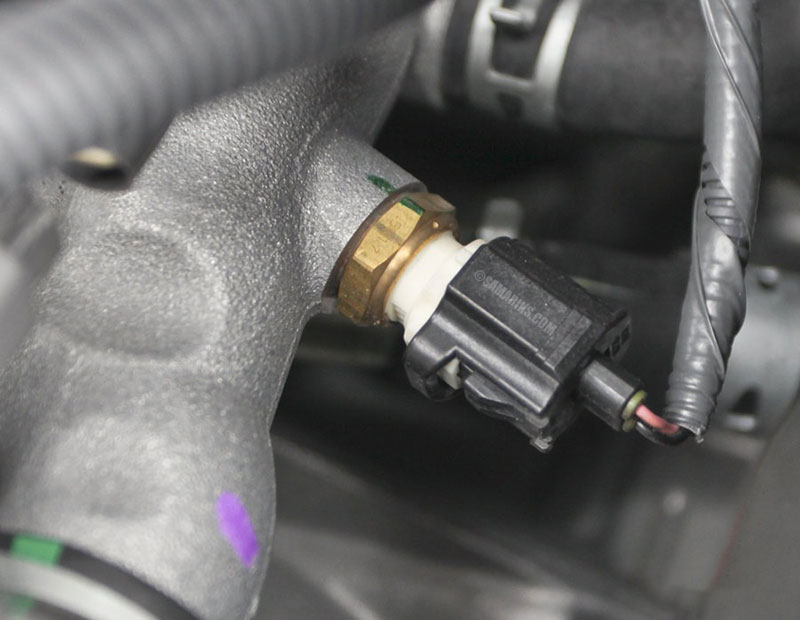
=> You may also like: Engine coolant temperature sensor location
Integration with Engine Management Systems
Fuel Injection and Ignition Timing
The ECU uses ECT sensor data to optimize fuel delivery and ignition timing. Cold engines require richer fuel mixtures to reduce wear and emissions, while warm engines operate on leaner mixtures for efficiency. Additionally, ignition timing adjustments help achieve optimal combustion.
Cooling System Control
The sensor plays a key role in regulating cooling fan operation. At low temperatures, the fan may remain off or run at reduced speeds. As coolant temperature rises, the ECU activates the fan to prevent overheating.
Dashboard Feedback
The ECT sensor also feeds data to the temperature gauge on the dashboard, providing real-time engine temperature status to drivers.
Types and Variations of Engine Coolant Temperature Sensors
Negative vs. Positive Temperature Coefficient Sensors
Most ECT sensors use NTC thermistors, where resistance decreases with temperature. However, some vehicles, such as Renault models, use positive temperature coefficient (PTC) sensors, where resistance increases as temperature rises.
Multi-Sensor Configurations
Some vehicles use multiple ECT sensors. A primary sensor near the thermostat provides data for ECU adjustments, while secondary sensors monitor radiator temperature or serve as backups.
How Does an Engine Coolant Temperature Sensor Work?
As the engine heats up, the resistance of the ECTS decreases, and vice-versa. This change in resistance is translated into a voltage signal that the ECU can interpret. The ECU uses this signal to adjust things like the air/fuel mixture, ignition timing, and idle speed, ensuring optimal performance under different temperature conditions.
Why is the Engine Coolant Temperature Sensor Important?
A properly functioning ECTS is crucial for several reasons:
- Optimal Fuel Efficiency: When the engine is cold, the ECU enriches the air/fuel mixture to compensate, ensuring a smooth start. As the engine warms up, the ECTS informs the ECU, allowing it to lean out the mixture for better fuel economy.
- Reduced Emissions: A correct air/fuel mixture contributes to cleaner exhaust gases, minimizing harmful emissions.
- Proper Engine Performance: The ECTS helps the engine run smoothly and efficiently across a wide range of temperatures, preventing issues like rough idling, stalling, and poor acceleration.
- Transmission Shift Points: The ECTS can also influence automatic transmission shift points, optimizing shift timing for smoother performance and fuel economy.
What Happens When the Engine Coolant Temperature Sensor Fails?
A failing ECTS can cause various problems, such as:
- Difficult Starting: If the ECU thinks the engine is already warm, it won’t enrich the fuel mixture, leading to starting difficulties.
- Poor Fuel Economy: A faulty ECTS can cause the engine to run rich, wasting fuel.
- Overheating: In some cases, a bad ECTS can prevent the cooling fan from activating, potentially leading to engine overheating.
- Rough Idling: The engine may idle roughly or stall due to an incorrect air/fuel mixture.
- Check Engine Light: A malfunctioning ECTS will often trigger the check engine light.
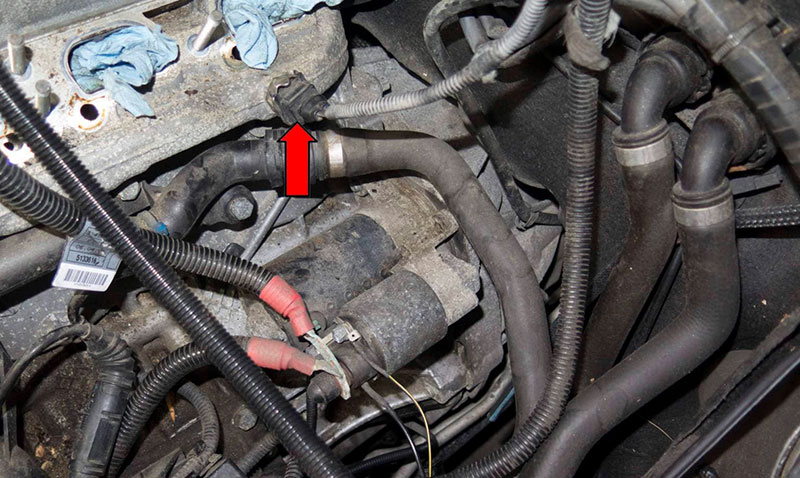
=> You may need this article:
Diagnostic and Failure Analysis
Common Failure Modes
- Open Circuit: Produces a constant 5V signal, leading to poor cold starts, excessive fuel consumption, and potential overheating.
- Short Circuit to Ground: Generates a 0V signal, triggering unnecessary cooling fan operation or false overheating warnings.
- Stuck Voltage: A fixed voltage reading leads to erratic fuel mixture control and cooling fan malfunctions.
Diagnostic Tools and Methods
- Voltmeter: Check voltage output at sensor terminals and compare with standard values.
- Ohmmeter: Measure resistance directly to confirm if it decreases as temperature rises.
- Oscilloscope: Analyze real-time voltage fluctuations to detect erratic signals
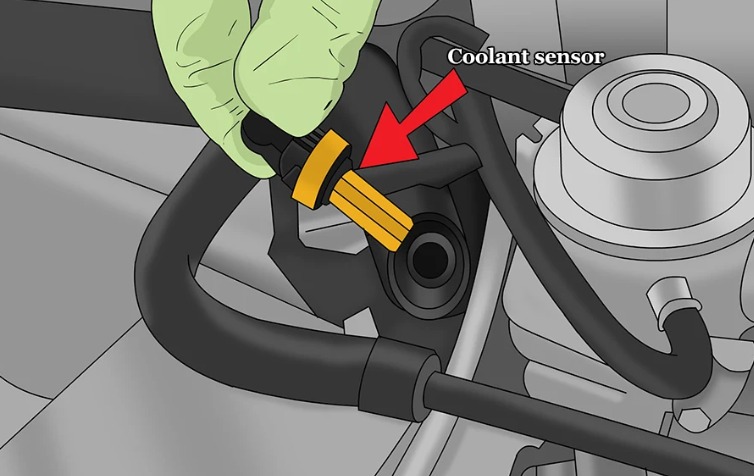
Expert Insights
John Miller, a seasoned automotive engineer, explains, “The ECTS is a small, inexpensive part, but its failure can have a significant impact on your vehicle’s performance and longevity. Regular maintenance and timely replacement are essential.”
Sarah Johnson, an experienced mechanic, adds, “Many drivers overlook the importance of the ECTS. It’s a critical component for optimal engine management and fuel efficiency.”
Conclusion
The engine coolant temperature sensor is a critical component for the proper functioning of your vehicle’s engine. It ensures optimal performance, fuel efficiency, and emissions control. Understanding its role can help you identify potential problems and maintain your vehicle effectively, contributing to its longevity and smooth operation.
FAQ
- What are the common symptoms of a bad ECTS? Common symptoms include difficult starting, poor fuel economy, overheating, rough idling, and the check engine light illuminating.
- How do I test an ECTS? Testing an ECTS usually involves using a multimeter to measure its resistance at different temperatures.
- How much does it cost to replace an ECTS? The cost of replacement varies depending on the vehicle make and model but is typically relatively inexpensive.
- Where is the ECTS located? The location varies depending on the vehicle, but it’s typically near the thermostat housing or in the cylinder head.
- Can I drive with a bad ECTS? While it might be possible to drive for a short period, it’s not recommended. A faulty ECTS can lead to further engine problems and reduced fuel efficiency.
- How often should I replace the ECTS? While there’s no set replacement interval, it’s good practice to have it checked during regular maintenance.
- Can a bad ECTS cause my car to overheat? Yes, in some cases, a failing ECTS can prevent the cooling fan from activating, potentially leading to overheating.
Need More Help?
For further assistance, please contact us via Whatsapp: +1(936)2896695, email [email protected], or visit us at 4590 Angus Road, New York, United States. Our customer service team is available 24/7. We also have helpful articles on related topics such as engine coolant temperature sensor location and how to test your engine coolant temperature sensor.
=> Related content:


Vediamo vs Xentry: What’s the Difference?
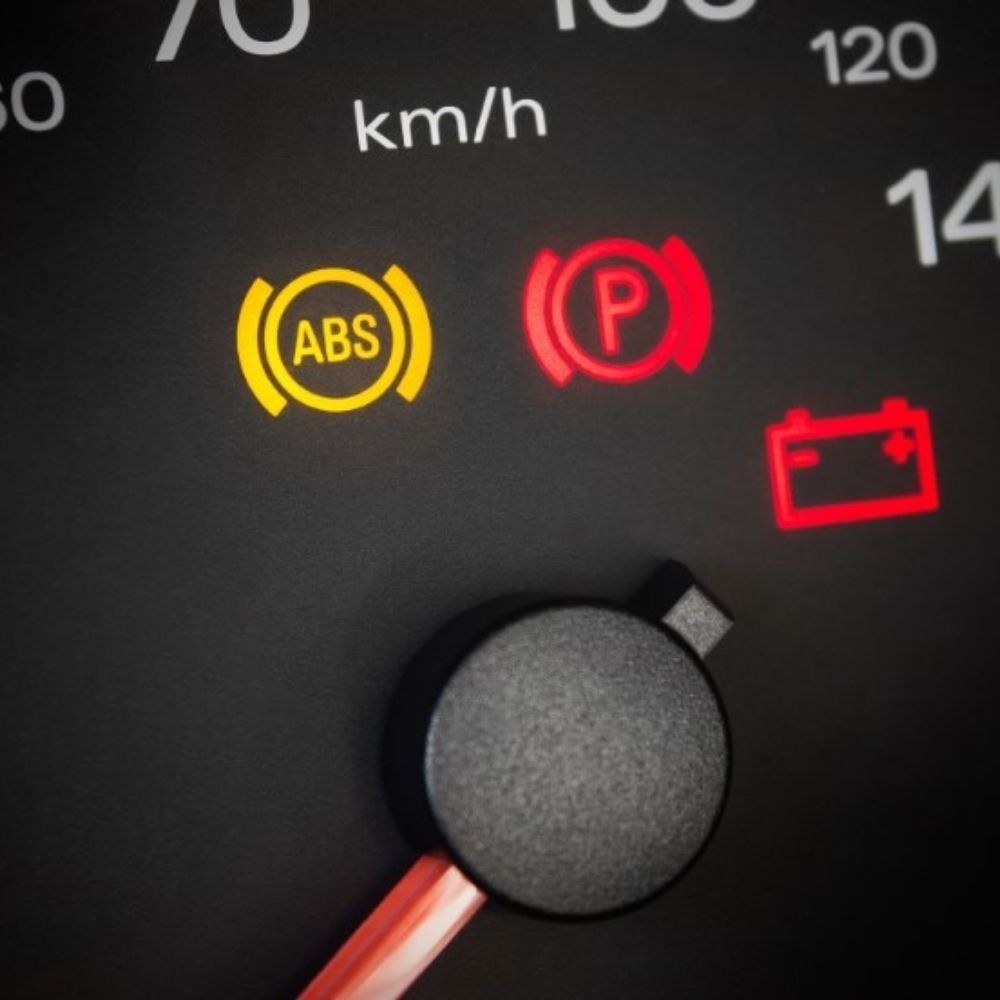
Why Did My ABS Light Come On? Four Reasons Update Latest
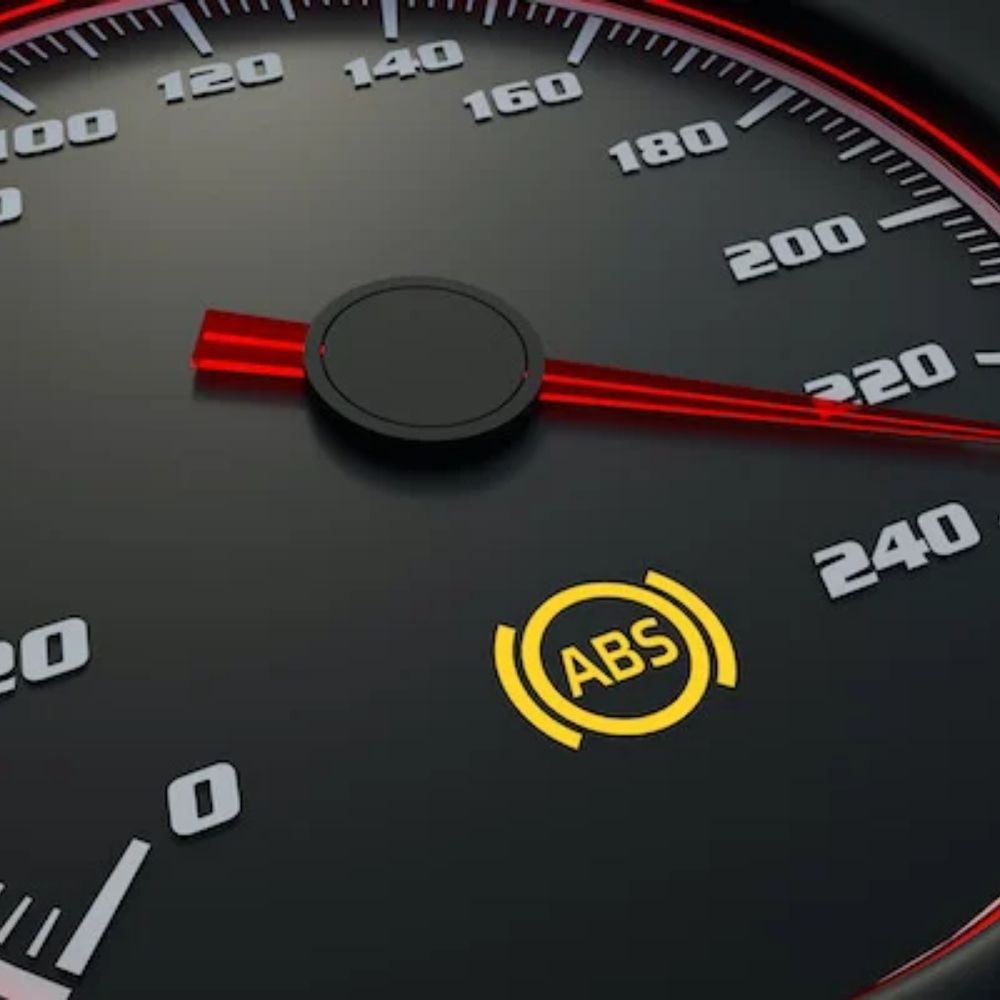
ABS Auto Brake Service – Anti-Lock Brake Service Cost





